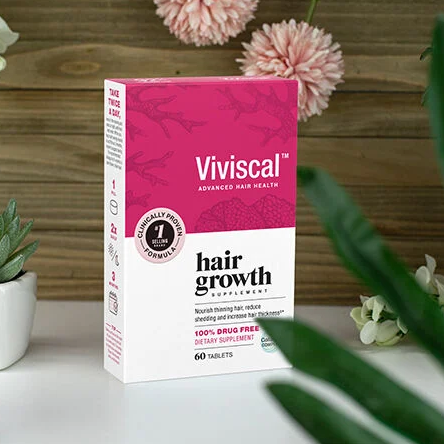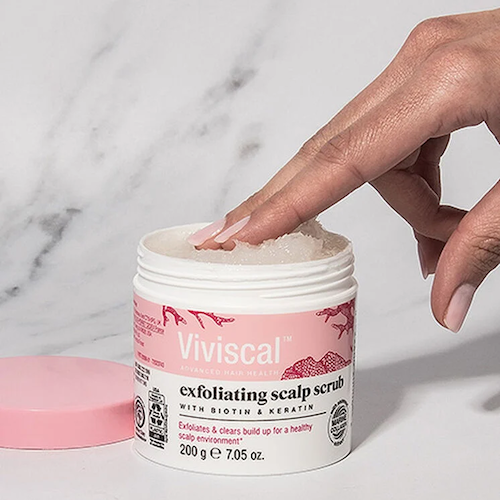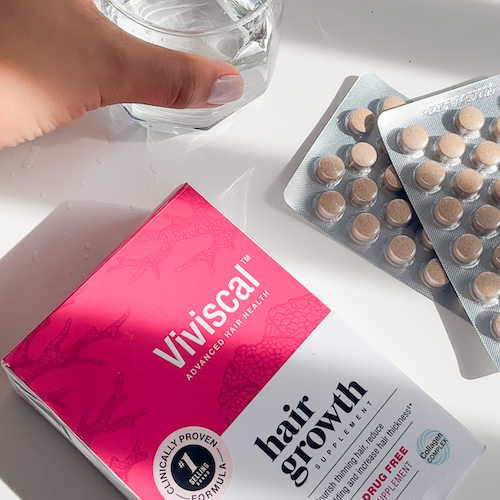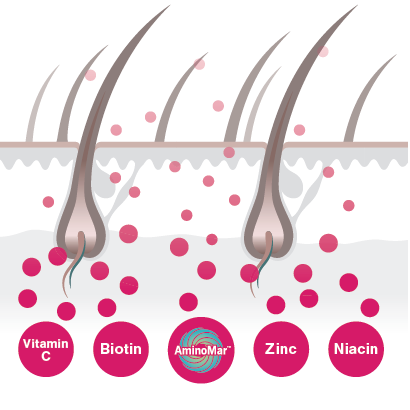Nothing ruins a relaxing shower like noticing a clump of hair in your shower drain. But believe it or not, it’s actually normal to Shed About 100 Hair Strands Per Day. Everyone’s hair grows in phases, and shedding is a natural part of that hair growth cycle. However, if you’ve ever noticed extra hair shedding during a particular season, you’re certainly not alone. Keep reading to learn how the hair shedding cycle works, and why seasonal hair loss occurs.
What Is the Hair Shedding Cycle?
Before we can learn about seasonal hair loss, we must first address hair shedding during the Hair Growth Cycle. You probably already know that each hair strand grows from a hair follicle. Blood vessels deliver nutrients to the hair follicles to provide them with the nourishment they need to grow healthy, strong hair. As each hair grows, it passes through a hair growth cycle of four stages: anagen, catagen, telogen and exogen.
- The anagen phase is the growing phase, where a new hair sprouts from the hair follicle. This phase lasts for two to seven years, and the length of the anagen phase determines how long a hair can grow. As we age, the anagen phase becomes shorter and shorter. Hair becomes weaker and thinner with each hair cycle. This type of hair thinning is sometimes referred to as anagen hair loss.
- The catagen phase is also known as the regression phase. During this period of 10 days, the hair follicle shrinks and detaches from the dermal papilla, located inside the hair follicle.
- The telogen phase, or resting phase, lasts around three months. During this time, a new hair begins to grow underneath the resting hair.
- The exogen phase is the shedding phase of the hair growth cycle. The old hair falls out, and a new hair takes its place. Sometimes called the “early anagen phase” because it marks the hair’s return back to the growing phase.

The 4 stages of hair growth
Each hair is in a different point of the hair growth cycle at any given time, which is why we don’t lose all of our hair at once. However, we may seem to be losing more hair than usual at different times of the year. This is called seasonal hair loss, and it’s totally normal. So if you want to know, do people shed more hair at certain times of the year? Then keep reading to learn all about seasonal hair loss!
What Is Seasonal Hair Loss?
Seasonal hair loss is usually temporary and occurs when more hair strands than average are shed during a particular season or time of year.
Hair Shedding In Summer seems to be particularly common. A 2017 trend study1 analyzed Google search data from 2004 to 2016, focusing on the most-searched keywords related to hair loss. They found that searches for “hair loss” and similar terms peak during summer and fall, and are at their lowest in the spring. This suggests that hair loss in the population is significantly correlated with seasonality, and most frequently occurs during summer and fall.
While no one is sure about the exact reason for seasonal hair loss, the researchers in this 2017 study suggest that hair sheds during the summer months because of the high outdoor temperatures. It’s thought that humans evolved to grow more hair during the winter months, so it makes sense that hair sheds more during the summer when it’s no longer needed (at least according to our bodies!).

But remember, having a hair shedding season is usually totally normal. And while this annual hair loss may leave our hair looking thinner than you might like, keep in mind that new, healthy hair strands should soon be growing in to replace that hair that has been shed.
How to Reduce Seasonal Hair Loss
Of course, nobody likes shedding hair, even when the hair loss is temporary! While there’s no way to completely beat the hair shedding cycle, Viviscal Hair Growth† Supplements can help to combat the effects of seasonal hair loss. Viviscal works by nourishing the hair follicles with key vitamins and minerals plus AminoMar™, our exclusive marine collagen complex. This cocktail of nourishment promotes healthy hair growth from the inside, which in turn helps to reduce shedding. In fact, in a clinical study+, women saw a 40% decrease in hair shedding in just three months! If you’re concerned about seasonal hair loss, Viviscal can help make a difference in the amount of shedding you experience.*
Have you ever experienced seasonal hair loss? Let us know in the comments!
1Hsiang, EY, et al; Br J Dermatol, 2017.
†Existing hair growth
+Ablon, G; Dermatol Res Pract, 2015










